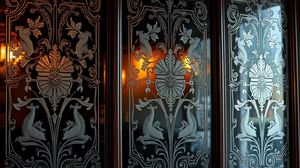
Located in the heart of London's vibrant Mayfair district, the Handel Hendrix House offers a unique glimpse into the lives of two of the most influential musicians in history. This historic site combines two former residences: that of composer George Frideric Handel, who lived here from 1723 until his death in 1759, and the upstairs flat once occupied by legendary guitarist Jimi Hendrix during the late 1960s.
Stepping into Handel's meticulously restored home is like entering a time capsule of early 18th-century London. Handel composed some of his most famous works, including "Messiah," within these very walls. The rooms are ornately decorated to reflect the Baroque style of the period, complete with authentic furniture and a collection of original manuscripts and artifacts.
In a fascinating twist of fate, the building that was once Handel's residence later became the home of Jimi Hendrix, whose presence electrifies the space with innovative rock and roll energy. Visitors can explore the 1960s-retro apartment where Hendrix called home, complete with his own personal items and memorabilia that vividly bring his story to life.
One intriguing aspect of the museum is the dual exhibitions, which offer rich insights into the vastly different worlds of classical and contemporary music. The juxtaposition of Handel's baroque elegance with Hendrix's bold counterculture vibe provides a compelling narrative of musical evolution across two centuries.
Among the surprising features of the Handel Hendrix House is its successful integration of multidimensional exhibits. Guests can not only tour the rooms but also enjoy live performances, workshops, and events that celebrate the legacies of both these musical giants, creating a dynamic and immersive experience.
Perhaps the most enchanting fact about the Handel Hendrix House is how it vividly contrasts and parallels the lives of its two famous residents, who, despite being separated by over 200 years, share a profound connection through their revolutionary contributions to the world of music.

Making the Most of Your Visit:
When visiting the Handel Hendrix House, take a moment to appreciate the contrast between the two residences. Start in Handel's Georgian townhouse for a truly immersive experience. And don't miss the harpsichord in the performance room; it's a central piece in understanding this Baroque composer's creative process.
Head to Hendrix's flat and look out for his favourite armchair; it's often overlooked, but it sets a unique tone for understanding his personal space. Imagine him relaxing here, guitar in hand, conjuring up some of his best-known riffs.
If you're a music enthusiast, check the dates for any live performances or workshops that might be happening during your visit. They often host intimate concerts with period instruments in Handel's music room, which offer an acoustic experience you won't find anywhere else in London.
Don't rush through the exhibits. Spend some time with the audio-visual guides on offer. They provide in-depth background stories told by leading musicians and experts, adding a rich layer of context to Hendrix's memorabilia and Handel's compositions.
After visiting, stroll around the picturesque Mayfair neighborhood. While the museum itself is historically captivating, the surrounding area offers quaint cafes and boutique shops where you can mull over your visit and perhaps catch an echo of the past in the bustling modern-day city.

Visiting Times & Costs:
The Handel Hendrix House in Mayfair is open to the public. Visitors can enjoy its exhibitions and events throughout the year. However, it is recommended to check in advance for any special closures, particularly around public holidays.
Opening Hours:
- Tuesday to Sunday: 10:00 AM - 5:00 PM
- Closed on Mondays except for Bank Holidays.
Admission Fees:
| Category | Price |
|---|---|
| Adults | £12.50 |
| Concessions | £10.50 |
| Children (under 16) | Free |
Tickets can be purchased on site or booked in advance.
Accessibility:
The museum has made significant efforts to accommodate visitors with mobility issues. An elevator is available to access the upper floors, and there are accessible restrooms on site. However, due to the historic nature of the buildings, some areas may pose challenges. It is advisable for visitors requiring special assistance to contact the museum ahead to ensure a comfortable visit.

Address & Map:

Nearby:























